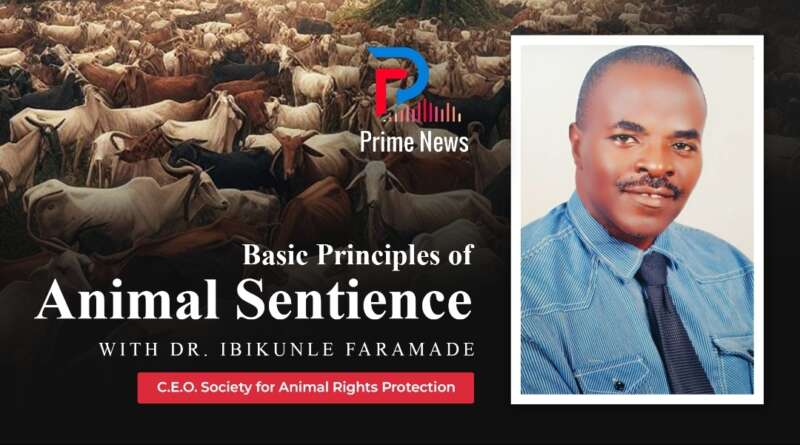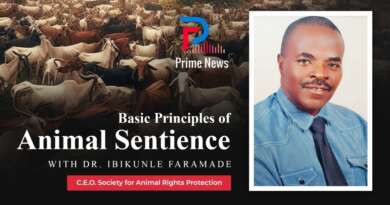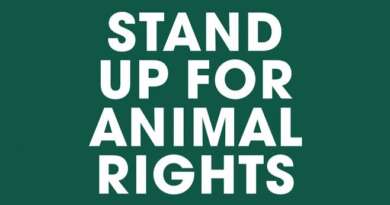Good General Welfare Practices in Livestock Farms
By Dr. Ibikunle Faramade
The Brambell report of 1965 in the United Kingdom was produced in response to the revelation made by Ruth Harrison in her book ‘Animal Machines’ which exposed the suffering inflicted on farm animals by industrialized agriculture. Since that time, farm animal welfare has continued to receive tremendous attention globally. It was concluded that ‘while man is free to subjugate animals, it is wrong for him to cause them to suffer unnecessarily’.
The summary of the required needs of farm animals are as follows:
- Environmental needs, such as housing and management which include handling and breeding as well as hygiene, transport and environmental enrichment.
- Physiological and behavior needs which include the possibility to express the main specific biological function as well as the behavioral repertoire. In this respect, the concept of freedom in animal husbandry was introduced. In fact the knowledge about the needs of animal is related to the proposal of giving animal some freedom
- Freedom from thirst, hunger and malnutrition-by ready access to fresh water and diet to maintain full health and vigor.
- Freedom from discomfort-by providing a suitable environment including shelter and a comfortable rest area.
- Freedom to express normal behavior by providing sufficient space, proper facilities and company of the animal’s own kind.
- Freedom from pain, injury and disease by prevention or rapid diagnose and treatment.
- Freedom from fear and distress by ensuring conditions which avoid mental suffering.
In order to meet the aforementioned needs, there are many approaches required to be deployed by farmers in their daily encounter with farm animals and in their husbandry routines. These include genetic selection, good physical environment, social groupings, air quality, adequate feed and water, treatment of diseases, avoidance of painful procedure and good handling practices.
Genetic selection should always take into account the health and welfare of animals
Genetic selection has been used for millennia to improve the production traits of agricultural animals. Research on animal welfare complements this work by identifying and mitigating often-unintended health and other consequences of genetic change, and by identifying ways that selection can improve animal welfare. Despite the gains in animal productivity that have been made, genetic selection for extreme production or physical traits can result in abnormalities that impair normal biological.
Good Physical Environment
Good physical environment, including the substrate (walking surface, resting surface etc.), should be suited to the species and breed so as to minimize risk of injury and transmission of diseases or parasites to animals. Some of the earliest welfare concerns regarding production animals arose from an apparent mismatch between the animals’ adaptations and the environments in which they were kept. Various research methods, including veterinary epidemiology, have been used to explore how an animals’ environment influences its health. Some environments contribute directly to injuries. Pigs in many confinement systems are kept on concrete floors which can cause pressure injuries, especially over bones. The physical environment should allow comfortable resting, safety and comfortable movement, including normal postural changes, and the opportunity to perform types of natural behaviour that animals are motivated to perform. Certain types of environments can lead to welfare problems by unduly constraining the basic movements and behaviour of animals.
Social Groups
Social groupings of animals should be managed to allow positive social behaviour and minimize injury, distress and chronic fear. Production animals are often kept in artificial groups that can either foster positive social behaviour or lead to aggression, injury and chronic fear. Pigs in the wild live in family groups of mixed gender, with males leaving the group when they reach sexual maturity. However, in normal farming practice, males are typically kept in groups of the same age, often with females. If the males are sexually intact, this can result in aggression and sexual ‘riding’ as the animals reach puberty,
Air Quality
Air quality, temperature and humidity in confined spaces should support good animal health and not be aversive to animals. Where extreme conditions occur, animals should not be prevented from using their natural methods of thermo-regulation. Air quality is important for the welfare of confined animals. Indoor poultry units often have high levels of ammonia and dust. High levels of atmospheric ammonia can cause keratoconjunctivitis in poultry as well as damage to the lungs and trachea. Production efficiency is often compromised when air quality is poor; for example, feed efficiency of chickens decreases at ammonia levels of 25–60 parts per million (ppm)
Adequate Feed & Water
Animals should have access to sufficient feed and water, suited to the animals’ age and needs, to maintain normal health and productivity and to prevent prolonged hunger, thirst, malnutrition or dehydration. Many decades of nutritional research have led to major improvements in the composition of diets; research on animal welfare complements this work by focusing on how animals gain adequate access to feed and water, and how diets and feeding systems influence the health and behaviour of animals. Cattle in semi-arid rangeland environments may fail to eat and drink if the available water is unpalatable, as may occur if evaporation leads to a high concentration of magnesium sulphate.
Treatment of Diseases
Diseases and parasites should be prevented and controlled as much as possible through good management practices. Animals with serious health problems should be isolated and treated promptly or killed humanely if treatment is not feasible or recovery is unlikely In view of the recognized connection between animal welfare and animal health, prevention and control of diseases and parasites are widely regarded as fundamental to animal welfare. Standards and practices can contribute to animal welfare by preventing and controlling diseases and parasites at four levels. Firstly, protection for individual animals can be provided by a combination of hygiene, vaccination and anti-parasite treatments. For example, comprehensive vaccination programmes.
Avoidance or Minimization of Painful Procedure
Where painful procedures cannot be avoided, the resulting pain should be properly managed to the extent that the pain is minimized. Research using behavioral and physiological indicators of pain, including vocalization, physical reactions and hormonal stress responses, has identified practical approaches for pain management for some of these procedures. Intentional harm such as hot iron branding (for identification purposes), dehorning without anesthetics, unnecessary surgical procedures such as castration, tail docking etc. should be avoided.
Good Handling Practices
The handling of animals should foster a positive relationship between humans and animals and should not cause injury, panic, lasting fear or avoidable stress. Many studies have demonstrated the importance of a positive human–animal relationship for reducing stress and facilitating high productivity in farm animals. Negative handling, for example using physical force, electric shock, shouting and rapid movement, can affect the health of animals. Owners and handlers should have sufficient skill and knowledge to ensure that animals are treated in accordance with these principles. Research with dairy cattle and pigs has shown that animal handling and productivity can be improved through training programmes aimed at improving attitudes and behaviour of handlers towards their animals
In conclusion, farmers should be reminded that adoption of good welfare practices in their daily routine is a worthwhile effort because it has direct impacts on livestock productivity and profitability. It could also facilitate the international acceptance of animals and animal products in the international market where good animal welfare practices have become the golden rule. It is a win- win situation for humans and animals.
Dr. Ibikunle Faramade is a veterinary pathologist and a Lecturer lecturer at the Federal College of Animal Health & Production Technology, Apata. Ibadan. He’s the C.E.O of the Society for Animal Rights Protection, a non-profit and a non-governmental organization dedicated to the promotion of animal welfare, animal rights and prevention of cruelty to animals.
animalrightsprotection2020@gmail.com , +2348028305284




